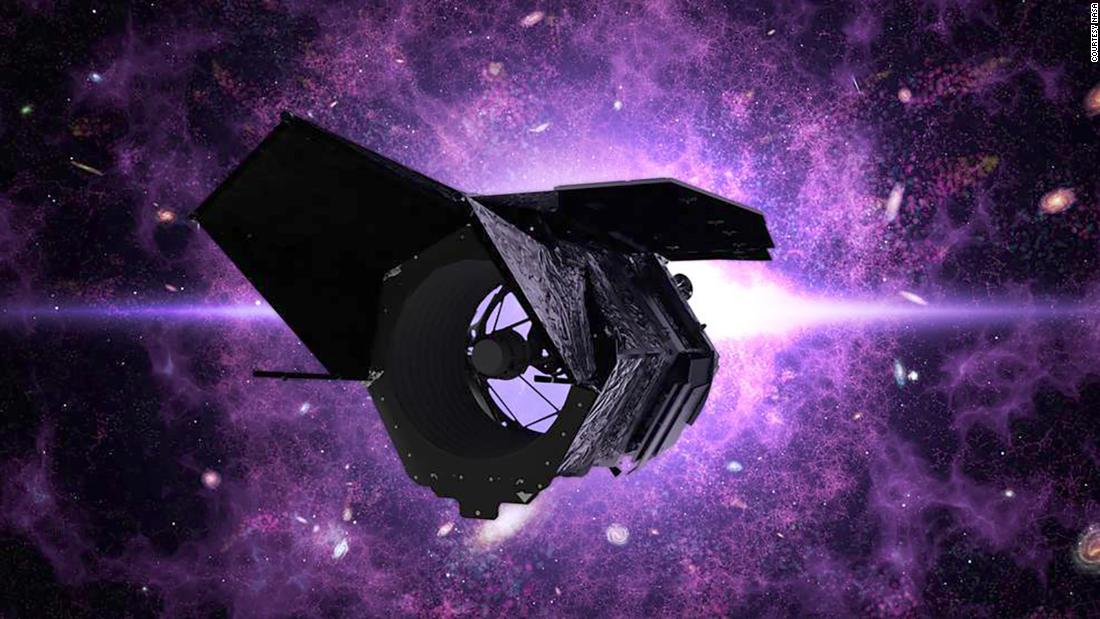
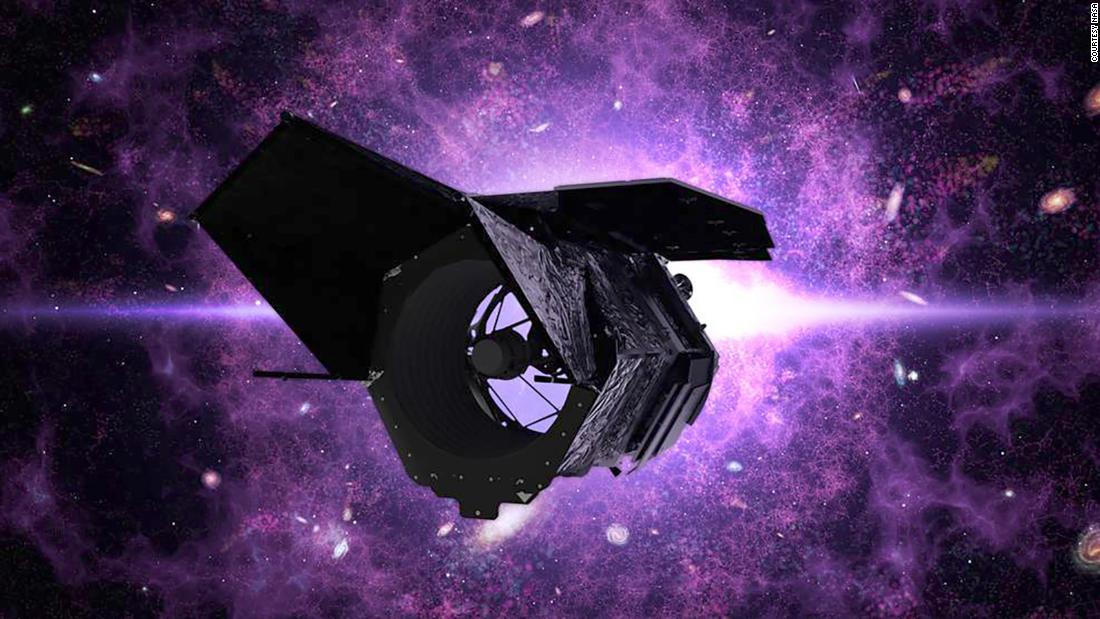
Photos: Cool unmanned space missions
NASA’s Wide Field Infrared Survey Telescope, slated to launch in the mid-2020s, has been named the Nancy Grace Roman Space Telescope, after NASA’s first chief astronomer.
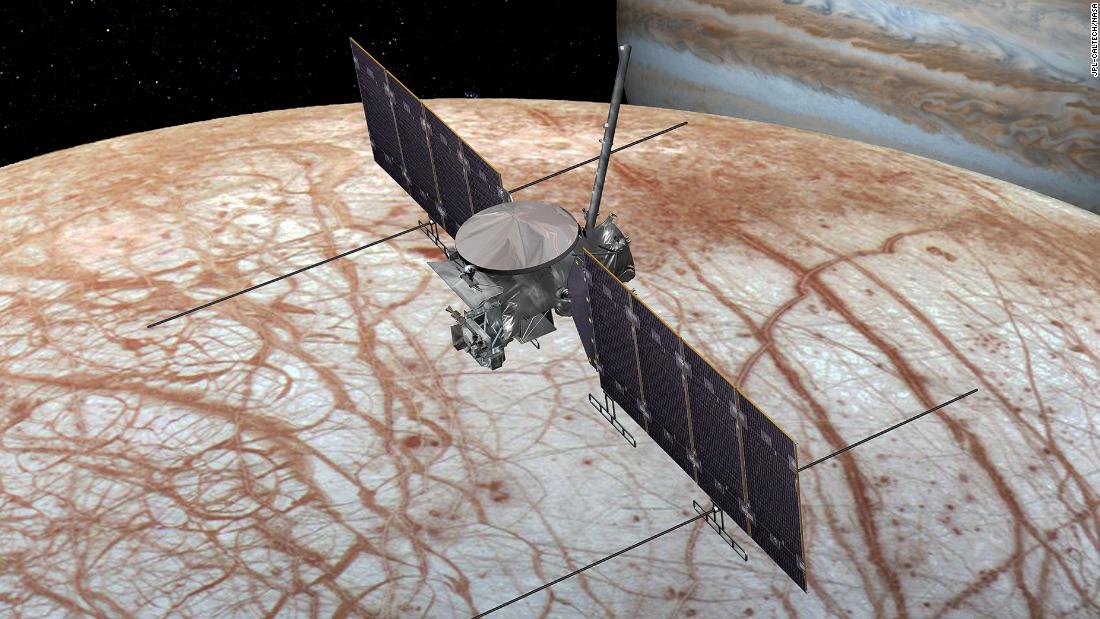
Photos: Cool unmanned space missions
This is an artist’s concept of the Europa Clipper spacecraft, which will investigate Jupiter’s icy moon.
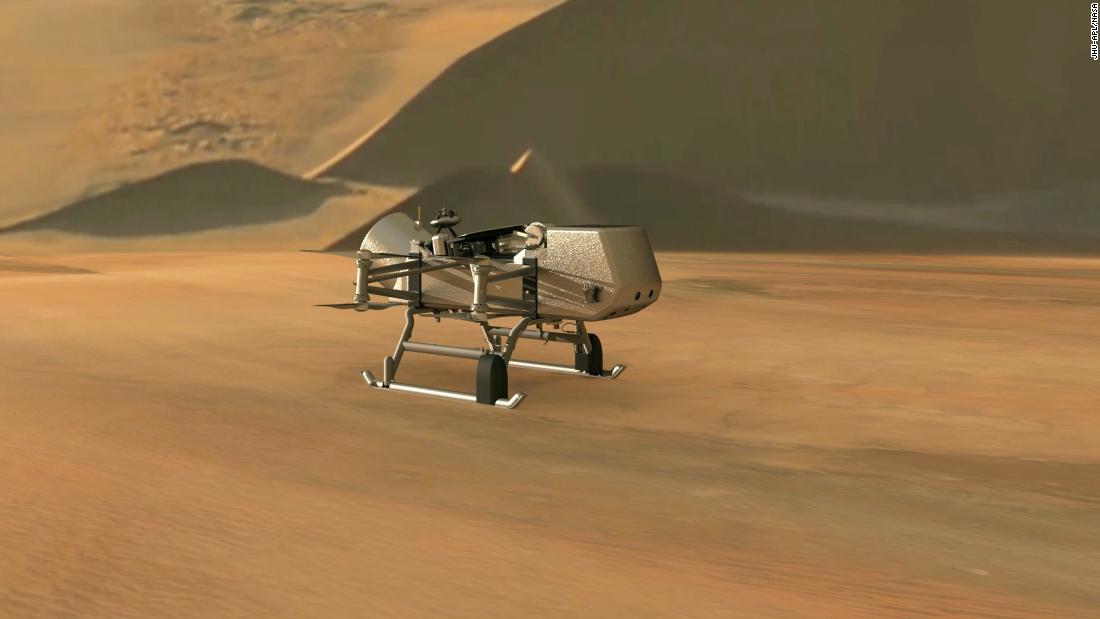
Photos: Cool unmanned space missions
This illustration shows NASA’s Dragonfly rotorcraft-lander approaching a site on Saturn’s exotic moon, Titan. Taking advantage of Titan’s dense atmosphere and low gravity, Dragonfly will explore dozens of locations across the icy world, sampling and measuring the compositions of Titan’s organic surface materials to characterize the habitability of Titan’s environment and investigate the progression of prebiotic chemistry.
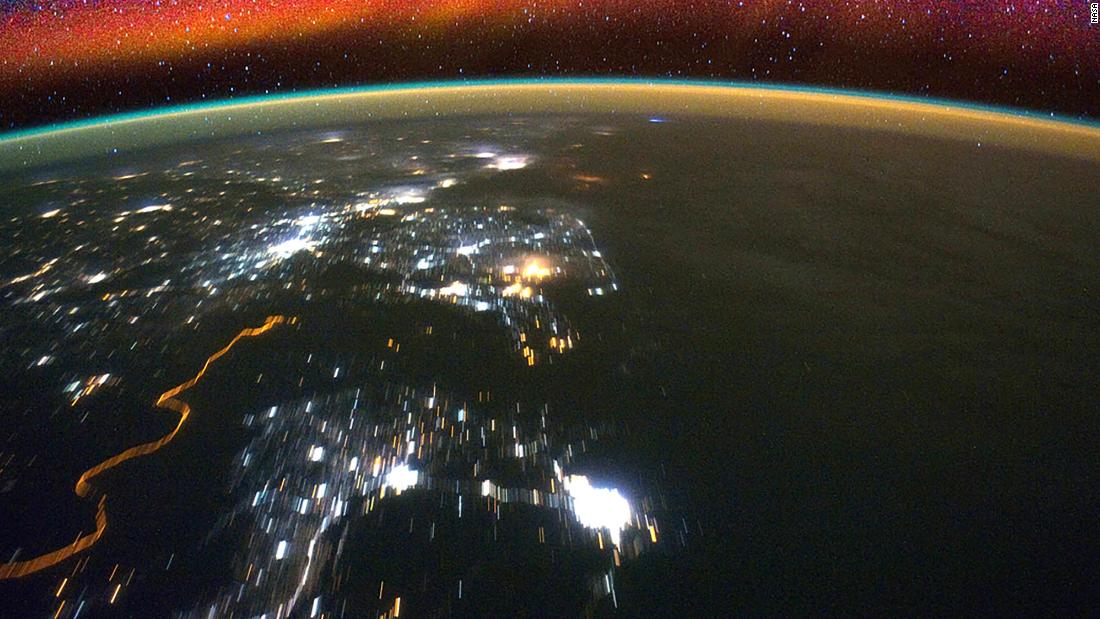
Photos: Cool unmanned space missions
Bright swaths of red in the upper atmosphere, known as airglow, can be seen in this image from the International Space Station. NASA’s ICON mission will observe how interactions between terrestrial weather and a layer of charged particles called the ionosphere create the colorful glow.
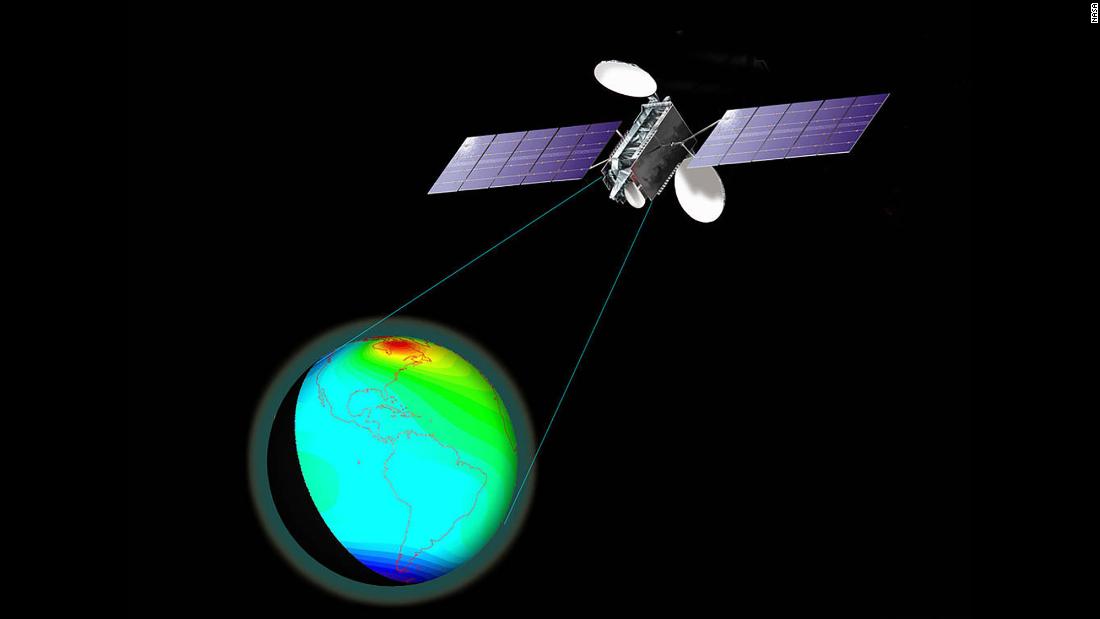
Photos: Cool unmanned space missions
NASA’s Global-scale Observations of the Limb and Disk mission — known as the GOLD mission — will examine the response of the upper atmosphere to force from the sun, the magnetosphere and the lower atmosphere.
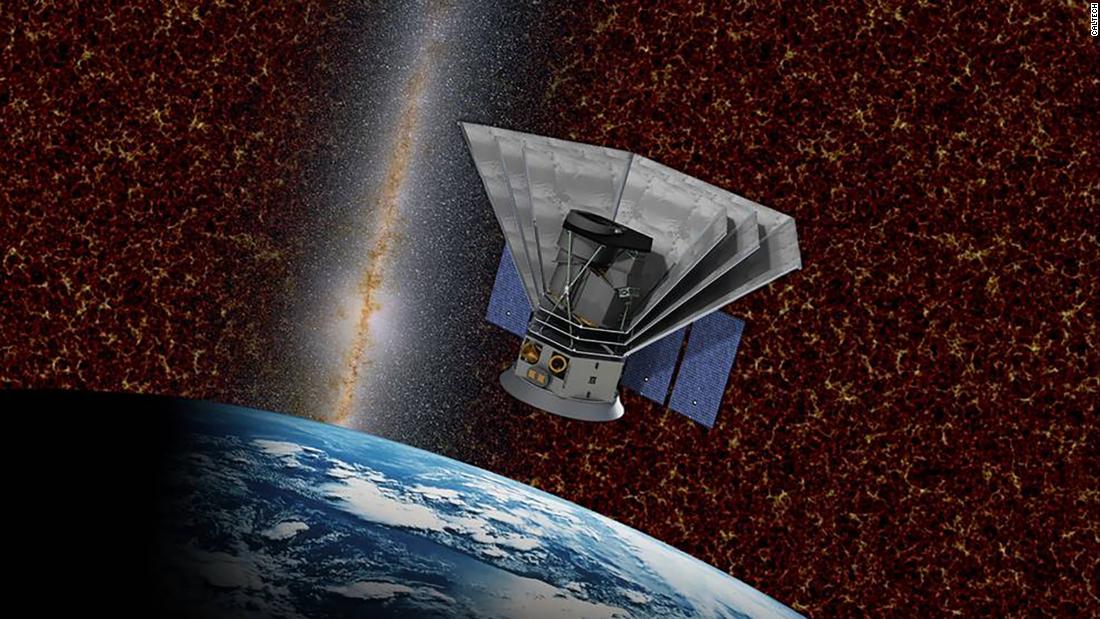
Photos: Cool unmanned space missions
SPHEREx, the Spectro-Photometer for the History of the Universe, Epoch of Reionization and Ices Explorer, will study the beginning and evolution of the universe and determine how common the ingredients for life are within the planetary systems found in our galaxy, the Milky Way. It is targeted to launch in 2023.

Photos: Cool unmanned space missions
NASA’s Transiting Exoplanet Survey Satellite launched in April and is already identifying exoplanets orbiting the brightest stars just outside our solar system. In the first three months since it began surveying the sky in July, it has found three exoplanets, with the promise of many more ahead.
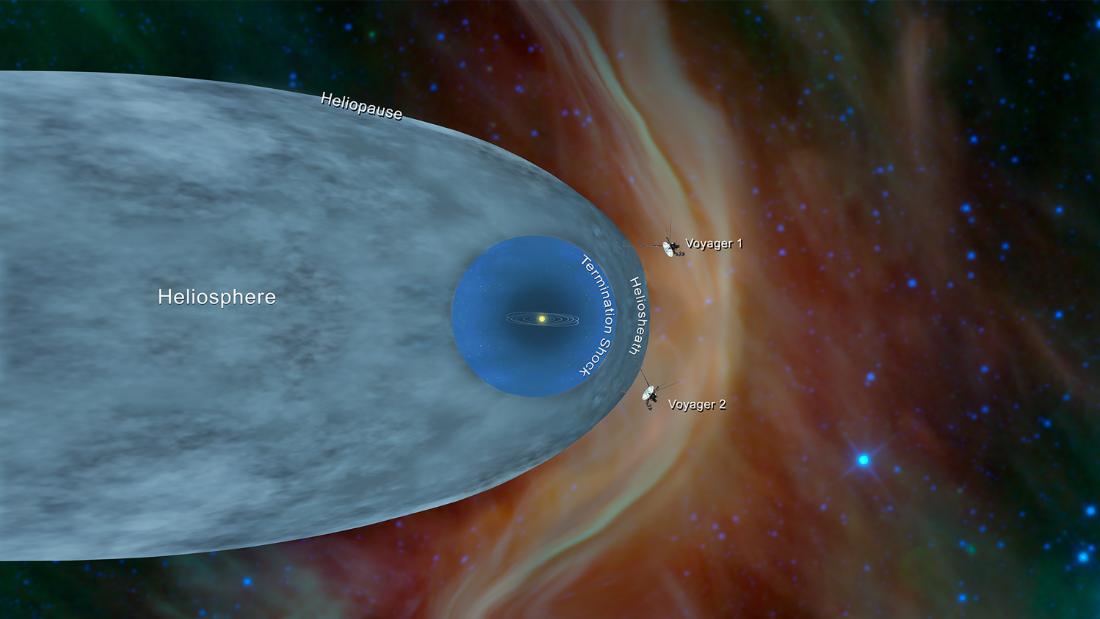
Photos: Cool unmanned space missions
This illustration shows the position of NASA’s Voyager 1 and Voyager 2 probes outside the heliosphere, a protective bubble created by the sun that extends well past the orbit of Pluto.
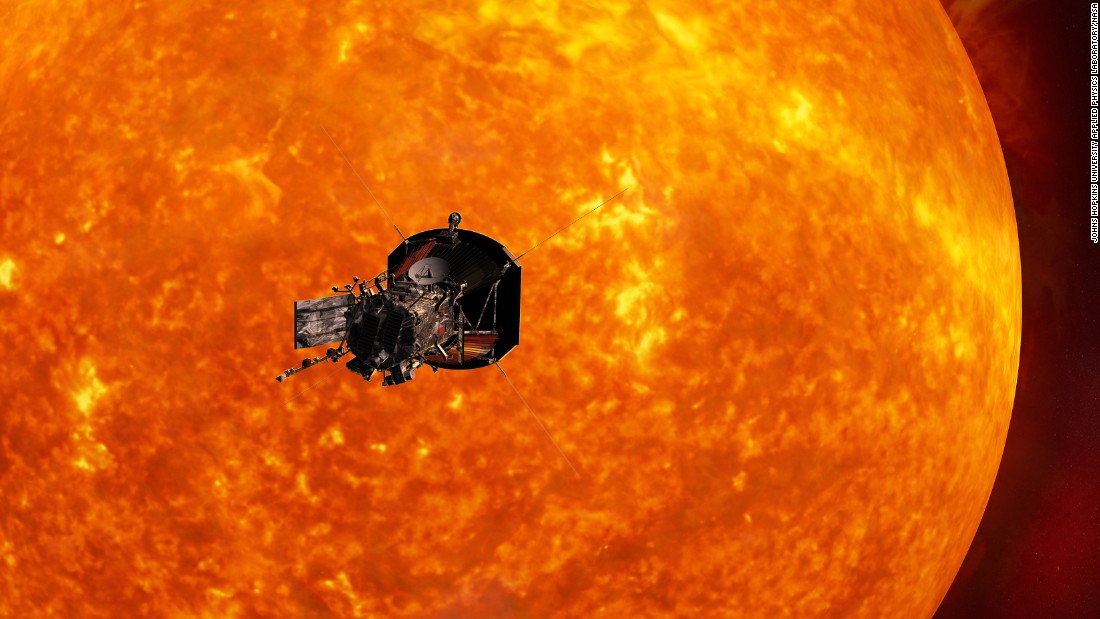
Photos: Cool unmanned space missions
This is an artist’s concept of the Solar Probe Plus spacecraft approaching the sun. In order to unlock the mysteries of the corona, but also to protect a society that is increasingly dependent on technology from the threats of space weather, we will send Solar Probe Plus to touch the sun.

Photos: Cool unmanned space missions
Breakthrough Starshot – This illustration shows light beams from Earth pushing a tiny spacecraft’s sail. The proposed Breakthrough Starshot project would send hundreds of “nanocraft” space probes 4.37 light years away — at speeds of up to 100 million miles an hour — to to explore Alpha Centauri, our nearest star system. The ambitious project is many years away from becoming reality.

Photos: Cool unmanned space missions
Breakthrough Starshot – Philanthropist Yuri Milner, left, and astrophysicist Stephen Hawking host a press conference to announce Breakthrough Starshot on Tuesday, April 12, in New York City. Facebook co-founder Mark Zuckerberg also sits on the mission’s board of directors.
New Horizons made its fly-by on July 14, 2015. The probe sent back amazing, detailed images of Pluto and its largest moon, Charon. It also dazzled scientists with new information about Pluto's atmosphere and landscape. New Horizons is still going today, heading out into the Kuiper Belt.” src=”image/gif;base64,R0lGODlhEAAJAJEAAAAAAP///////wAAACH5BAEAAAIALAAAAAAQAAkAAAIKlI+py+0Po5yUFQA7″ />
New Horizons made its fly-by on July 14, 2015. The probe sent back amazing, detailed images of Pluto and its largest moon, Charon. It also dazzled scientists with new information about Pluto's atmosphere and landscape. New Horizons is still going today, heading out into the Kuiper Belt.” src=”https://cdn.cnn.com/cnnnext/dam/assets/150715132416-pluto-charon-approach-super-169.jpg” />
Photos: Cool unmanned space missions
New Horizons – No spacecraft had ever gone to Pluto before NASA’s New Horizons made its fly-by on July 14, 2015. The probe sent back amazing, detailed images of Pluto and its largest moon, Charon. It also dazzled scientists with new information about Pluto’s atmosphere and landscape. New Horizons is still going today, heading out into the Kuiper Belt.
Curiosity was launched in 2011, and it is the most advanced rover ever built. It's helping scientists determine whether Mars is, or ever was, habitable for life forms.” src=”image/gif;base64,R0lGODlhEAAJAJEAAAAAAP///////wAAACH5BAEAAAIALAAAAAAQAAkAAAIKlI+py+0Po5yUFQA7″ />
Curiosity was launched in 2011, and it is the most advanced rover ever built. It's helping scientists determine whether Mars is, or ever was, habitable for life forms.” src=”https://cdn.cnn.com/cnnnext/dam/assets/140901092156-curiosity-rover-bonanza-super-169.jpg” />
Photos: Cool unmanned space missions
Curiosity Mars Rover – This image shows the Curiosity rover doing a test drill on a rock dubbed “Bonanza King” to see if it would be a good place to dig deeper and take a sample. Curiosity was launched in 2011, and it is the most advanced rover ever built. It’s helping scientists determine whether Mars is, or ever was, habitable for life forms.
Kepler space observatory is the first NASA mission dedicated to finding Earth-size planets in or near the habitable zones of stars. Launched in 2009, Kepler has been detecting planets and planet candidates with a wide range of sizes and orbital distances. Yes, we are still finding new planets.” src=”image/gif;base64,R0lGODlhEAAJAJEAAAAAAP///////wAAACH5BAEAAAIALAAAAAAQAAkAAAIKlI+py+0Po5yUFQA7″ />
Kepler space observatory is the first NASA mission dedicated to finding Earth-size planets in or near the habitable zones of stars. Launched in 2009, Kepler has been detecting planets and planet candidates with a wide range of sizes and orbital distances. Yes, we are still finding new planets.” src=”https://cdn.cnn.com/cnnnext/dam/assets/131020024501-nasa-kepler-horizontal-large-gallery.jpg” />
Photos: Cool unmanned space missions
Kepler – The Kepler space observatory is the first NASA mission dedicated to finding Earth-size planets in or near the habitable zones of stars. Launched in 2009, Kepler has been detecting planets and planet candidates with a wide range of sizes and orbital distances. Yes, we are still finding new planets.
fired up again in December 2013 to hunt for asteroids. Its images are now available to the public online.” src=”image/gif;base64,R0lGODlhEAAJAJEAAAAAAP///////wAAACH5BAEAAAIALAAAAAAQAAkAAAIKlI+py+0Po5yUFQA7″ />
fired up again in December 2013 to hunt for asteroids. Its images are now available to the public online.” src=”https://cdn.cnn.com/cnnnext/dam/assets/141112151136-nasa-neowise-super-169.jpg” />
Photos: Cool unmanned space missions
NEOWISE – NASA’s infrared-wavelength space telescope called NEOWISE may help make us safer. The space telescope hunts for asteroids and comets, including those that could pose a threat to Earth. During its planned three-year survey through 2016, NEOWISE will identify near-Earth objects, gather data on their size and take other measurements. The probe was launched on December 14, 2009, for its original mission — to perform an all-sky astronomical survey. The probe was put in hibernation for several years, but it was fired up again in December 2013 to hunt for asteroids. Its images are now available to the public online.
Dawn spacecraft began orbiting the dwarf planet Ceres in March. Scientists were surprised by the large white spots shining on Ceres, seen above. On its way to Ceres, Dawn spent time studying the proto-planet Vesta in 2001. Ceres and Vesta are the two most massive bodies in the main asteroid belt between Mars and Jupiter. The mission, launched in 2007, is giving scientists new knowledge of how the solar system formed and evolved.” src=”image/gif;base64,R0lGODlhEAAJAJEAAAAAAP///////wAAACH5BAEAAAIALAAAAAAQAAkAAAIKlI+py+0Po5yUFQA7″ />
Dawn spacecraft began orbiting the dwarf planet Ceres in March. Scientists were surprised by the large white spots shining on Ceres, seen above. On its way to Ceres, Dawn spent time studying the proto-planet Vesta in 2001. Ceres and Vesta are the two most massive bodies in the main asteroid belt between Mars and Jupiter. The mission, launched in 2007, is giving scientists new knowledge of how the solar system formed and evolved.” src=”https://cdn.cnn.com/cnnnext/dam/assets/150226190304-ceres-two-bright-spots-super-169.jpg” />
Photos: Cool unmanned space missions
Dawn – NASA’s Dawn spacecraft began orbiting the dwarf planet Ceres in March. Scientists were surprised by the large white spots shining on Ceres, seen above. On its way to Ceres, Dawn spent time studying the proto-planet Vesta in 2001. Ceres and Vesta are the two most massive bodies in the main asteroid belt between Mars and Jupiter. The mission, launched in 2007, is giving scientists new knowledge of how the solar system formed and evolved.
Deep Impact spacecraft was launched on January 12, 2005, and it traveled 268 million miles (431 million kilometers) to hurl its coffee table-sized probe into comet Tempel 1 on July 4, 2005. This image of Tempel 1 was taken by Deep Impact's camera 67 seconds after the probe hit the comet. Scattered light from the collision saturated the camera's detector and caused the bright splash seen in this image. The Deep Impact mission was supposed to end a few weeks later, but NASA approved an extension and renamed the spacecraft EPOXI and sent it on to fly by Comet Hartley 2 in November 2010. The probe stopped communicating with mission managers in September 2013 and was declared lost.” src=”image/gif;base64,R0lGODlhEAAJAJEAAAAAAP///////wAAACH5BAEAAAIALAAAAAAQAAkAAAIKlI+py+0Po5yUFQA7″ />
Deep Impact spacecraft was launched on January 12, 2005, and it traveled 268 million miles (431 million kilometers) to hurl its coffee table-sized probe into comet Tempel 1 on July 4, 2005. This image of Tempel 1 was taken by Deep Impact's camera 67 seconds after the probe hit the comet. Scattered light from the collision saturated the camera's detector and caused the bright splash seen in this image. The Deep Impact mission was supposed to end a few weeks later, but NASA approved an extension and renamed the spacecraft EPOXI and sent it on to fly by Comet Hartley 2 in November 2010. The probe stopped communicating with mission managers in September 2013 and was declared lost.” src=”https://cdn.cnn.com/cnnnext/dam/assets/150731132016-comet-temple-1-deep-impact-super-169.jpg” />
Photos: Cool unmanned space missions
Deep Impact/EPOXI – NASA’s Deep Impact spacecraft was launched on January 12, 2005, and it traveled 268 million miles (431 million kilometers) to hurl its coffee table-sized probe into comet Tempel 1 on July 4, 2005. This image of Tempel 1 was taken by Deep Impact’s camera 67 seconds after the probe hit the comet. Scattered light from the collision saturated the camera’s detector and caused the bright splash seen in this image. The Deep Impact mission was supposed to end a few weeks later, but NASA approved an extension and renamed the spacecraft EPOXI and sent it on to fly by Comet Hartley 2 in November 2010. The probe stopped communicating with mission managers in September 2013 and was declared lost.
Cassini spacecraft ended its mission in 2017. The probe was launched on October 15, 1997, from Cape Canaveral Air Force Station in Florida. It arrived at Saturn on June 30, 2004. The spacecraft dropped a probe called Huygens to the surface of Saturn's moon Titan. It was the first landing on a moon in the outer solar system.” src=”image/gif;base64,R0lGODlhEAAJAJEAAAAAAP///////wAAACH5BAEAAAIALAAAAAAQAAkAAAIKlI+py+0Po5yUFQA7″ />
Cassini spacecraft ended its mission in 2017. The probe was launched on October 15, 1997, from Cape Canaveral Air Force Station in Florida. It arrived at Saturn on June 30, 2004. The spacecraft dropped a probe called Huygens to the surface of Saturn's moon Titan. It was the first landing on a moon in the outer solar system.” src=”https://cdn.cnn.com/cnnnext/dam/assets/150731120003-nasa-saturn-with-rings-super-169.jpg” />
Photos: Cool unmanned space missions
Cassini – The Cassini spacecraft ended its mission in 2017. The probe was launched on October 15, 1997, from Cape Canaveral Air Force Station in Florida. It arrived at Saturn on June 30, 2004. The spacecraft dropped a probe called Huygens to the surface of Saturn’s moon Titan. It was the first landing on a moon in the outer solar system.
probe's mission ended on March 25, 2011, when mission managers put it in safe mode and turned off the transmitter for the last time.” src=”image/gif;base64,R0lGODlhEAAJAJEAAAAAAP///////wAAACH5BAEAAAIALAAAAAAQAAkAAAIKlI+py+0Po5yUFQA7″ />
probe's mission ended on March 25, 2011, when mission managers put it in safe mode and turned off the transmitter for the last time.” src=”https://cdn.cnn.com/cnnnext/dam/assets/141115140831-01-stardust-1115-horizontal-large-gallery.jpg” />
Photos: Cool unmanned space missions
Stardust – The Stardust spacecraft was launched on February 7, 1999, from Cape Canaveral, Florida. After traveling 3.5 billion miles (5.6 billion kilometers), the spacecraft made history by capturing images of asteroid Annefrank and collecting samples of comet Wild 2 and successfully returning them to Earth. It also took spectacular images of comet Tempel 1. The probe’s mission ended on March 25, 2011, when mission managers put it in safe mode and turned off the transmitter for the last time.
Voyager 1 and Voyager 2 spacecraft, which were launched in 1977. Each probe is much farther away from Earth and the sun than Pluto. In August 2012, Voyager 1 made the historic entry into interstellar space, the region between stars. Scientists hope to learn more about this region when Voyager 2 reaches interstellar space. Both spacecraft are still sending scientific information back to NASA.” src=”image/gif;base64,R0lGODlhEAAJAJEAAAAAAP///////wAAACH5BAEAAAIALAAAAAAQAAkAAAIKlI+py+0Po5yUFQA7″ />
Voyager 1 and Voyager 2 spacecraft, which were launched in 1977. Each probe is much farther away from Earth and the sun than Pluto. In August 2012, Voyager 1 made the historic entry into interstellar space, the region between stars. Scientists hope to learn more about this region when Voyager 2 reaches interstellar space. Both spacecraft are still sending scientific information back to NASA.” src=”https://cdn.cnn.com/cnnnext/dam/assets/141115140429-01-voyager-1-1115-horizontal-large-gallery.jpg” />
Photos: Cool unmanned space missions
Voyager 1 and Voyager 2 – Of all the NASA missions, none has visited as many planets, rings and moons as the twin Voyager 1 and Voyager 2 spacecraft, which were launched in 1977. Each probe is much farther away from Earth and the sun than Pluto. In August 2012, Voyager 1 made the historic entry into interstellar space, the region between stars. Scientists hope to learn more about this region when Voyager 2 reaches interstellar space. Both spacecraft are still sending scientific information back to NASA.
Surveyor 1 was the first U.S. spacecraft to make a soft landing on the Moon. The program ran during the mid-1960s and was declared a success. The program's focus eventually switched to support of the Apollo program.” src=”image/gif;base64,R0lGODlhEAAJAJEAAAAAAP///////wAAACH5BAEAAAIALAAAAAAQAAkAAAIKlI+py+0Po5yUFQA7″ />
Surveyor 1 was the first U.S. spacecraft to make a soft landing on the Moon. The program ran during the mid-1960s and was declared a success. The program's focus eventually switched to support of the Apollo program.” src=”https://cdn.cnn.com/cnnnext/dam/assets/141115140220-01-surveyor-1-1115-horizontal-large-gallery.jpg” />
Photos: Cool unmanned space missions
Surveyor – Surveyor 1 was the first U.S. spacecraft to make a soft landing on the Moon. The program ran during the mid-1960s and was declared a success. The program’s focus eventually switched to support of the Apollo program.
Explorer 1, America's first satellite, is held by, from left, NASA official William Pickering, scientist James Van Allen and rocket pioneer Wernher von Braun. The team was gathered at a news conference at the National Academy of Sciences in Washington to announce the satellite's successful launch. It had been launched a few hours before, on January 31, 1958.” src=”image/gif;base64,R0lGODlhEAAJAJEAAAAAAP///////wAAACH5BAEAAAIALAAAAAAQAAkAAAIKlI+py+0Po5yUFQA7″ />
Explorer 1, America's first satellite, is held by, from left, NASA official William Pickering, scientist James Van Allen and rocket pioneer Wernher von Braun. The team was gathered at a news conference at the National Academy of Sciences in Washington to announce the satellite's successful launch. It had been launched a few hours before, on January 31, 1958.” src=”https://cdn.cnn.com/cnnnext/dam/assets/141115135803-01-explorer-1-1115-horizontal-large-gallery.jpg” />
Photos: Cool unmanned space missions
Explorer 1 – A model of Explorer 1, America’s first satellite, is held by, from left, NASA official William Pickering, scientist James Van Allen and rocket pioneer Wernher von Braun. The team was gathered at a news conference at the National Academy of Sciences in Washington to announce the satellite’s successful launch. It had been launched a few hours before, on January 31, 1958.

